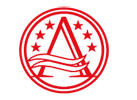Our production facility
Our production facility is located in Steyr, in the heart of Upper Austria. For production, we rely on extremely reliable printers from Ultimaker and high-quality printing materials from premium manufacturers. Thanks to our advanced printer farm, we are able to produce and deliver not only prototypes but also small series in the shortest possible time! You can choose from an almost infinite selection of materials.
Your contact person
We would like to invite you to a free initial consultation to discuss your project plans and develop customised solutions. Customer centricity is very important to us, which is why we are also happy to offer companies in the region an on-site consultation in order to gain the best possible understanding of the application and background processes. Get in touch with us today to arrange a consultation!
Delivery time
Depending on the type and quantity of your order, the delivery time may vary due to the production time added by our shipping partners. We aim to hand over single orders or orders with less than 24 hours printing time to the shipping partner within 6 working days. Orders with a production time of less than 120 hours will be made ready for dispatch within a maximum of 12 working days after receipt of the order. Delivery dates are agreed individually for larger order quantities.
Expert check
We carry out a check to determine whether your components can be produced both technically and economically effectively using additive manufacturing and uncover any potential weaknesses. We also inform you whether optimizations are required for series production in order to improve quality. For example, minimizing overhangs and undercuts can reduce the need for support structures, which in turn can lead to a reduction in component costs.




